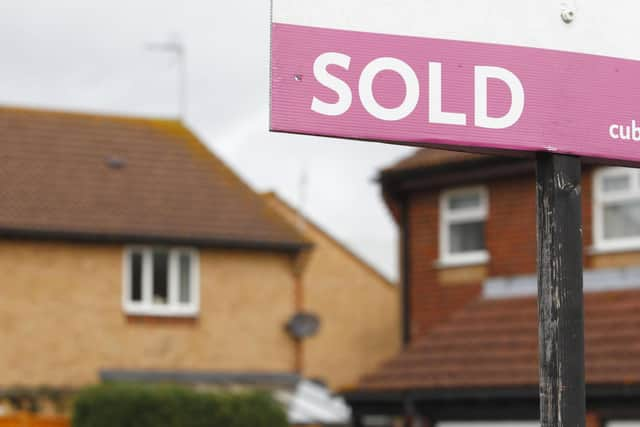Reform of rental market can provide a solution to our housing problems - Yorkshire Post Letters
I would distinguish two housing problems: that lots of people don’t have the accommodation they want and that many more are paying too much for the accommodation they have.
Conventional wisdom, with the honourable exception of Jayne Dowle (Yorkshire Post, 16 January), would have us address both at once by building yet more houses. But that requires time, space and money and sets us up for our next potential problem: too many houses.
Advertisement
Hide AdAdvertisement
Hide AdI propose addressing the excessive cost problem, reducing the rent paid (sadly, this is in a way that doesn’t enable people to move upmarket as one might have expected).


First, I would seek to make private residential letting businesses viable at lower rents. This would be by refinancing the sector with equity rather than borrowed money. Property companies would issue more shares and use the money raised to pay off debt.
Private borrow-to-buy-to-let landlords would sell up and be replaced by landlords who can buy using their own money. Instead of rent having to cover the cost of borrowing the value of the property, it would only need to be as attractive as the net interest that would have been received on the money as savings.
This requires a shift from saving to investing; from lending so that others can buy to buying directly oneself. Those naïve souls who feel they are entitled to a risk-free return from a risk prone economy would be called upon to pay for the state guarantee of their deposits, through a higher tax rate on interest (with an allowance encouraging people to keep a modest float of savings available).
Advertisement
Hide AdAdvertisement
Hide AdHere we can take advantage of inflation, coupled with the tax, to give a significant negative return on larger amounts of money held as savings, making them relatively less attractive than investments.
That still leaves the issue of supply and demand pushing up property prices and rents. But demand is not the number of people wanting some goods, it is the amount of money they can use to pay for them.
For buyers, the state could regulate not only the minimum deposit required in relation to the amount borrowed, but also the minimum monthly combined interest and capital repayment. Had this been applied earlier we would not now have ‘homeowners’ struggling with a rise from a miniscule interest rate which no reasonable person could have expected to endure for 25 years.
On rent, we hear suggestions that 30 per cent of income or thereabouts is a maximum reasonably affordable level. Why don’t we make this a legally enforceable limit?
Advertisement
Hide AdAdvertisement
Hide AdIt would be ‘rent control’, but in a form that avoids the rigidity of a maximum rent set for each property. Landlords could increase the rent, but only if they can find a higher earning tenant.
Employers can enable workers to live where they need them: by paying them more.
This ‘interference in the market’ is no more than an agreement among would-be tenants to show restraint in how far they will go in trying to outbid each other.
They may not get the home they might otherwise have over-stretched themselves to secure. But, by the same token, the one they do get will not be snatched from them by over-stretchers.